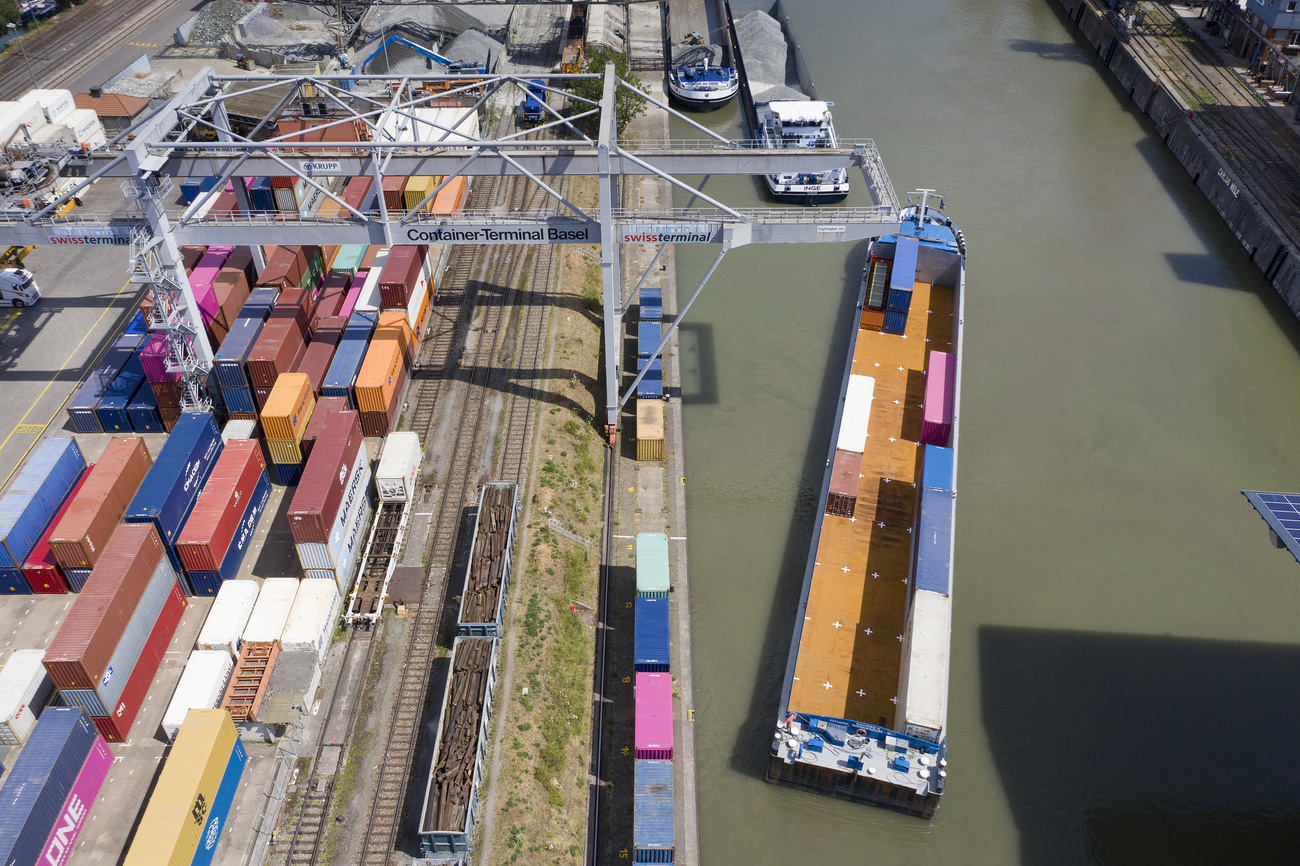Who benefits from free trade agreements with Switzerland?

Switzerland has 35 free trade agreements (FTAs) with 45 countries or blocs. Some benefit more than others from favourable tariff arrangements.
Switzerland’s willingness to participate in free trade deals can be traced backed to the beginnings of European integration after the Second World War. Frustrated by the lack of progress within the European Economic Community (the predecessor of the European Union), the Alpine nation joined Britain, Norway, Denmark, Austria, Portugal and Sweden to create a multilateral body with the goal to remove trade barriers: the European Free Trade Association (EFTA).
The EFTA Convention was signed in November 1959 in Stockholm and came into force in May 1960. Full free trade in industrial goods among EFTA countries was achieved in 1966, a year before the European Economic Community accomplished its own customs union. A happy union between EFTA and the EU was achieved in 1972, when the two rival blocs signed a free trade deal with each other.
Since then, Switzerland has concluded 33 FTAs with 43 countries or blocs. The Alpine nation usually makes deals as part of the EFTA bloc but can also go it alone like it did with Japan and China.
What does Switzerland get out of free trade deals?
“From the perspective of Swiss export promotion, every free trade agreement is primarily about facilitating access to important markets for our companies. This strengthens the competitiveness of our business location and thus Switzerland’s prosperity,” says Christine Moser of Switzerland Global Enterprise, the official Swiss organisation for export and investment promotion.
Contrary to popular belief, FTAs do not mean trade with no restrictions. The objective is usually to promote more trade by lowering or removing certain barriers such as import tariffs. This involves a lot of negotiations and can take many years to arrive at a mutually beneficial solution. Moser gives the example of the recently concluded FTA with India, which took 17 years of dealmaking. Swiss companies in the machinery, watch and transport sectors especially stand to benefit.
“In those sectors, customs duties and tariffs are especially high which puts pressure on Swiss companies on their pricing policy in India,” she says. “With the free trade agreement, companies will get additional leverage on their pricing policy.”
In 2022, Swiss companies saved a total of CHF2.4 billion ($2.7 billion) in customs duty thanks to all the FTAs in place, according to the latest FTA Monitor released last month.
FTAs are also not merely restricted to goods. They have evolved to include services, investment and public procurement. FTA negotiations can therefore involve give and take over a wide range of issues depending on the interests and strengths of the partner countries. Since 2010, Switzerland has also introduced a chapter on trade and sustainable development in every FTA. In 2021, a free trade deal with Indonesia narrowly survived a referendum launched by opponents who blamed palm oil cultivation for the destruction of the rainforest there.
Do Switzerland’s FTA partners benefit?
Countries that sign an FTA with Switzerland do benefit from tariff exemptions in terms of real-world trade. In 2022, 77.1% of Swiss imports by value from FTA partners were duty free. However, there is a significant amount of difference based on the region. For example, the EU and EFTA enjoyed significant proportion of waivers in 2022 of 84.2% and 93.1% respectively, China and the Gulf Cooperation Council in the middle at 64.1% and 68.5% respectively and others like the South African Customs Union and Indonesia at the lower end with 19.2% and 6.7% respectively.
In most cases, Switzerland is better off than its FTA partner.
According to the State Secretariat for Economic Affairs (SECO), the share of duty free imports and exports vary according to the tariff structures, the products traded as well as if FTA preference are utilised or not. Sometimes it is simply the case of being too complicated for foreign companies to do the necessary paperwork.
“For certain products that are produced in highly fragmented international value chains, it is sometimes difficult for companies to fulfil the preferential origin rules,” says SECO spokesperson Fabian Maienfisch. “Companies must document the manufacturing process and, if necessary, adapt it in order to achieve preferential origin.They may therefore decide not to use FTAs if the costs of these adjustments exceed the potential benefits of FTA tariff savings”.
Edited by Reto Gysi von Wartburg/ts

In compliance with the JTI standards
More: SWI swissinfo.ch certified by the Journalism Trust Initiative










You can find an overview of ongoing debates with our journalists here . Please join us!
If you want to start a conversation about a topic raised in this article or want to report factual errors, email us at english@swissinfo.ch.